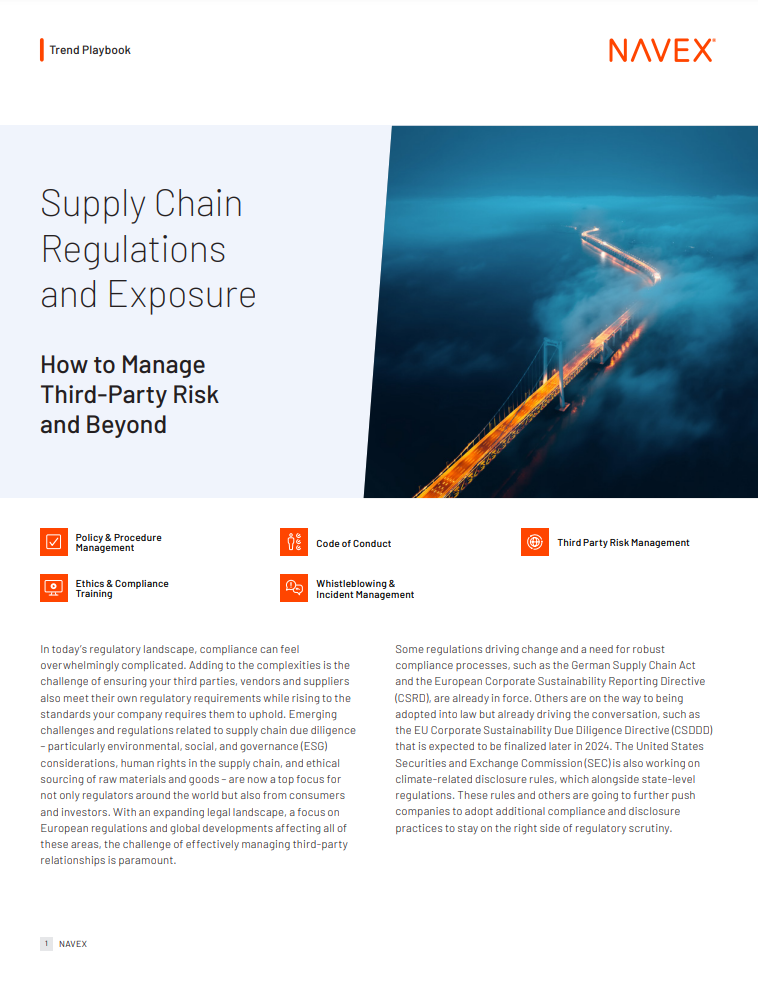
Supply Chain Regulations and Exposure: How to Manage Third-Party Risk and Beyond

In today’s regulatory landscape, compliance can feel overwhelmingly complicated. Adding to the complexities is the challenge of ensuring your third parties, vendors and suppliers also meet their own regulatory requirements while rising to the standards your company requires them to uphold. Emerging challenges and regulations related to supply chain due diligence – particularly environmental, social, and governance (ESG) considerations, human rights in the supply chain, and ethical sourcing of raw materials and goods – are now a top focus for not only regulators around the world but also from consumers and investors. With an expanding legal landscape, a focus on European regulations and global developments affecting all of these areas, the challenge of effectively managing third-party relationships is paramount.
Some regulations driving change and a need for robust compliance processes, such as the German Supply Chain Act and the European Corporate Sustainability Reporting Directive (CSRD), are already in force. Others are on the way to being adopted into law but already driving the conversation, such as the EU Corporate Sustainability Due Diligence Directive (CSDDD) that is expected to be finalized later in 2024. The United States Securities and Exchange Commission (SEC) is also working on climate-related disclosure rules, which alongside state-level regulations. These rules and others are going to further push companies to adopt additional compliance and disclosure practices to stay on the right side of regulatory scrutiny.